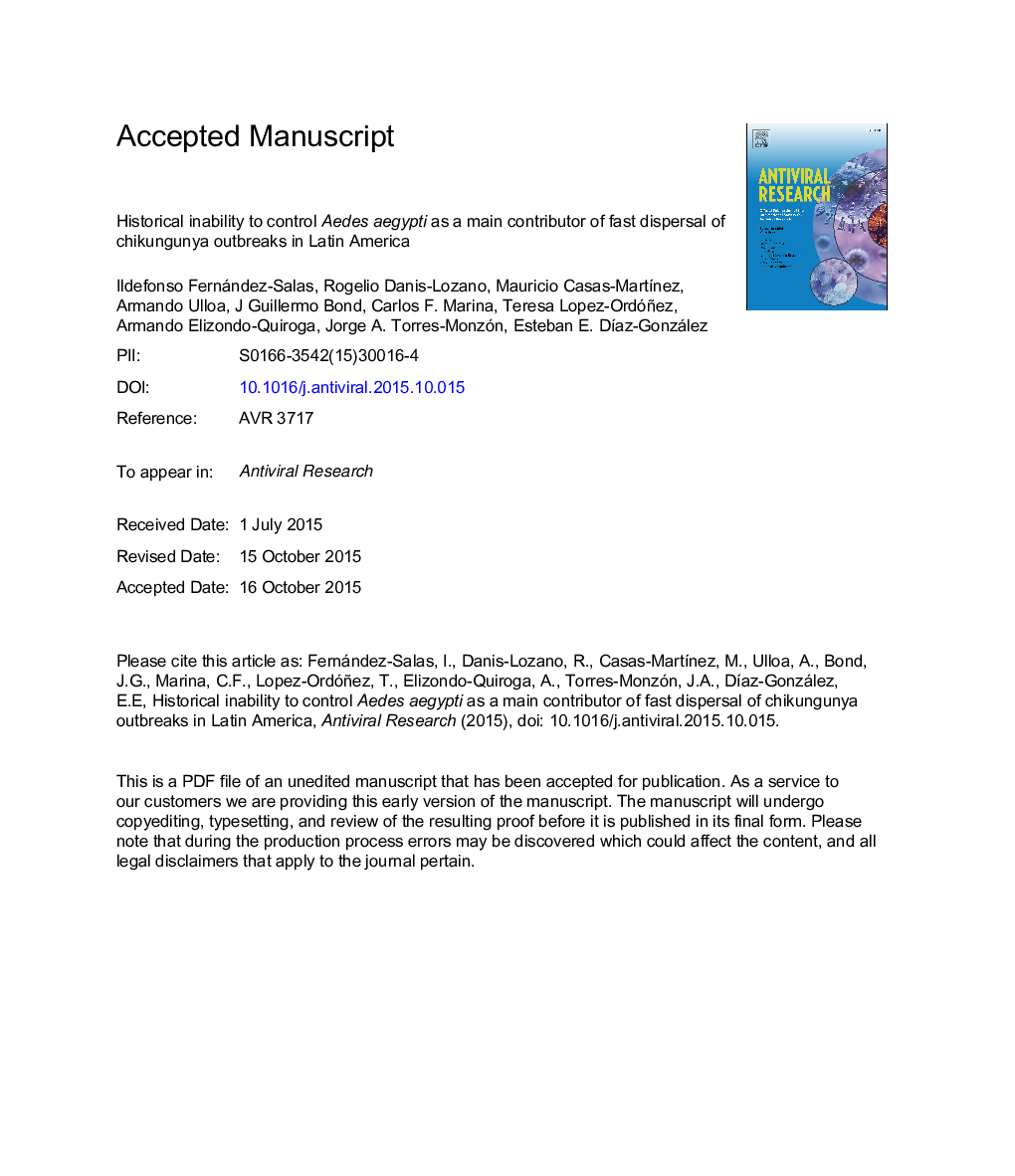| Article ID | Journal | Published Year | Pages | File Type |
|---|---|---|---|---|
| 5821863 | Antiviral Research | 2015 | 46 Pages |
Abstract
The arrival of chikungunya fever (CHIKF) in Latin American countries has been expected to trigger epidemics and challenge health systems. Historically considered as dengue-endemic countries, abundant Aedes aegypti populations make this region highly vulnerable to chikungunya virus (CHIKV) circulation. This review describes the current dengue and CHIKF epidemiological situations, as well as the role of uncontrolled Ae. aegypti and Aedes albopictus vectors in spreading the emerging CHIKV. Comments are included relating to the vector competence of both species and failures of surveillance and vector control measures. Dengue endemicity is a reflection of these abundant and persistent Aedes populations that are now spreading CHIKV in the Americas. This article forms part of a symposium in Antiviral Research on “Chikungunya discovers the New World.”
Related Topics
Life Sciences
Immunology and Microbiology
Virology
Authors
Ildefonso Fernández-Salas, Rogelio Danis-Lozano, Mauricio Casas-MartÃnez, Armando Ulloa, J. Guillermo Bond, Carlos F. Marina, Teresa Lopez-Ordóñez, Armando Elizondo-Quiroga, Jorge A. Torres-Monzón, Esteban E. DÃaz-González,
